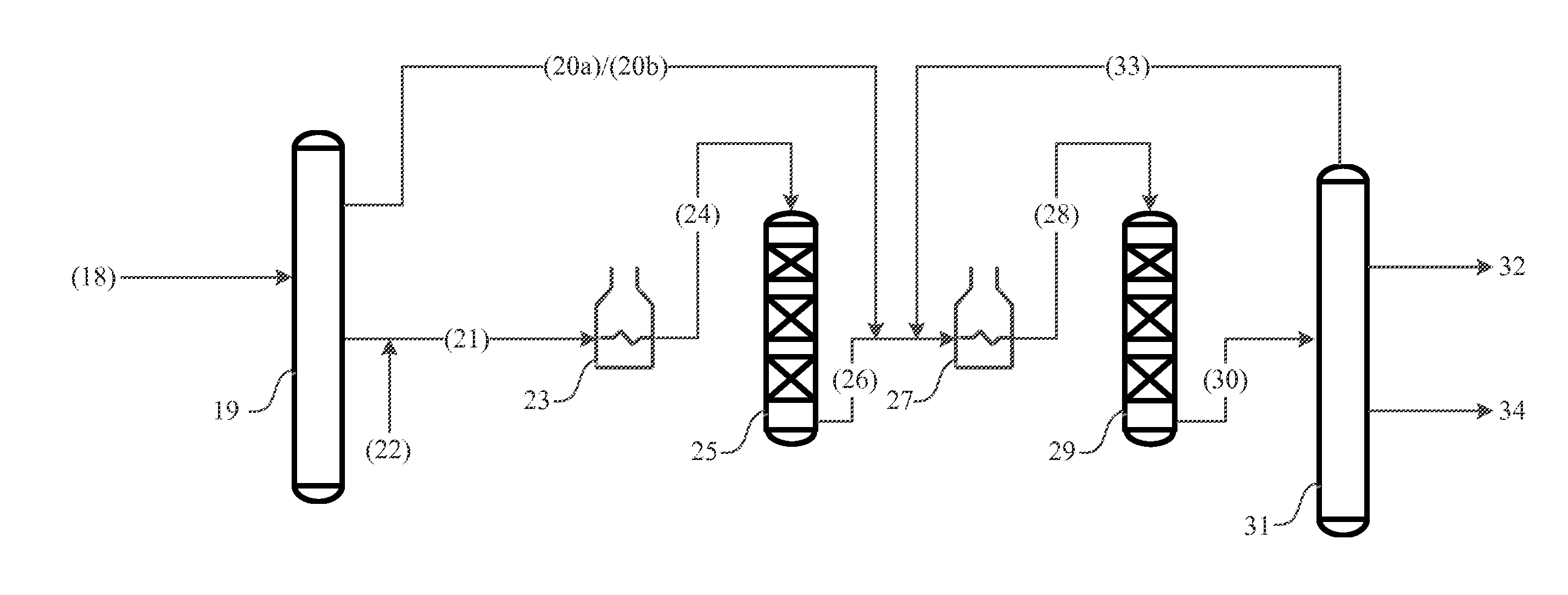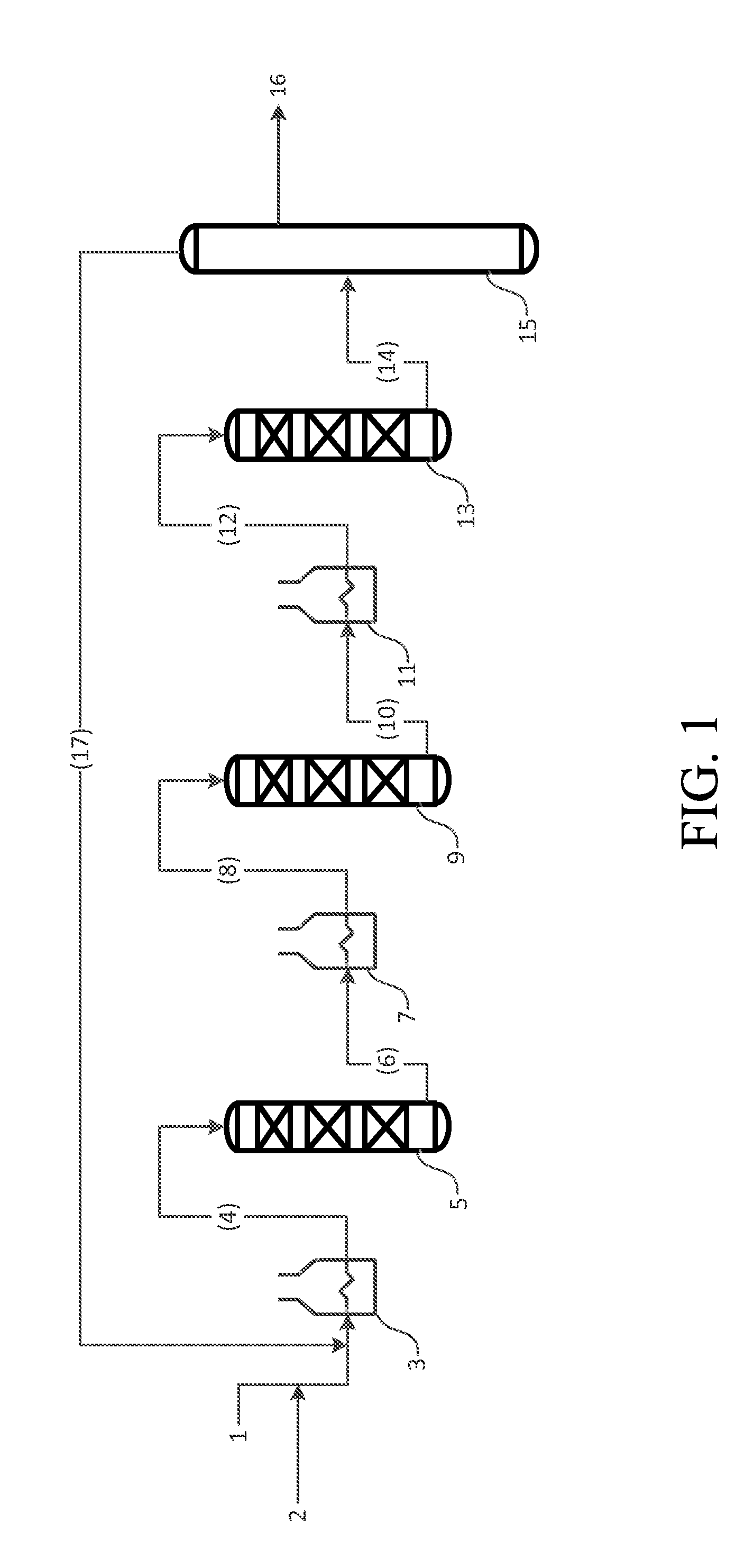Two-stage reforming process configured for increased feed rate to manufacture reformate
a technology of reformation process and feed rate, which is applied in the direction of catalytic naphtha reforming, fuels, and naphtha treatment. it can solve the problems of hcl and nhsub>4, damage to equipment used in the reforming process, corroded by-product formation, etc., and achieves less material to reform, high feed rate, and high feed rate
- Summary
- Abstract
- Description
- Claims
- Application Information
AI Technical Summary
Benefits of technology
Problems solved by technology
Method used
Image
Examples
Embodiment Construction
Introduction
[0028]“Two-stage reforming process” refers to a reforming processing wherein a naphtha feedstock is subjected to reforming conditions in one or more reforming reactors containing conventional metallic reforming catalyst (first stage) to form an intermediate reformate. The intermediate reformate is then subjected to reforming conditions in one or more reforming reactors containing one or more zeolite-based catalysts (second stage) to form a final reformate.
[0029]“Periodic Table” refers to the version of IUPAC Periodic Table of the Elements dated Jun. 22, 2007, and the numbering scheme for the Periodic Table Groups is as described in Chemical and Engineering News, 63(5), 27 (1985).
[0030]“Hydroprocessing” refers to a process in which a carbonaceous feedstock is brought into contact with hydrogen and a catalyst, at a higher temperature and pressure, for the purpose of removing undesirable impurities and / or converting the feedstock to a desired product.
[0031]“Naphtha” means a...
PUM
 Login to View More
Login to View More Abstract
Description
Claims
Application Information
 Login to View More
Login to View More - R&D
- Intellectual Property
- Life Sciences
- Materials
- Tech Scout
- Unparalleled Data Quality
- Higher Quality Content
- 60% Fewer Hallucinations
Browse by: Latest US Patents, China's latest patents, Technical Efficacy Thesaurus, Application Domain, Technology Topic, Popular Technical Reports.
© 2025 PatSnap. All rights reserved.Legal|Privacy policy|Modern Slavery Act Transparency Statement|Sitemap|About US| Contact US: help@patsnap.com



